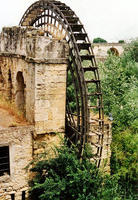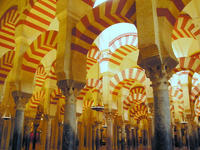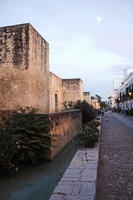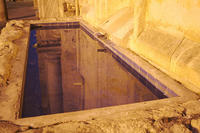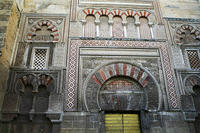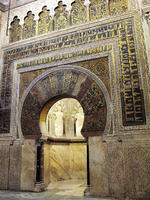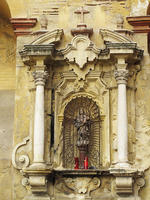You are in: Europe -> Spain -> Historic Centre of C... , and traditional search or Image Gallery will yield results of this site only
Historic Centre of Cordoba
| Site number: | 313 |
|
| Type of site: | Cultural | |
| Date: | 8th century | |
| Date of Inscription: | 1984, 1994 | |
| Location: | Europe, Spain, Province of Cordoba, Autonomous Community of Andalusia | |
Up to 75 images are shown here. Click on each for more details or on Image Gallery for more images.
Six official UN languages:
Arabic,
Chinese,
English,
French,
Russian,
Spanish
Other languages: Bosnian, Bulgarian, Catalan, Croatian, Czech, Dutch, Esperanto, Farsi, Finnish, Galician, German, Hebrew, Italian, Japanese, Ladino, Lithuanian, Norwegian-bokmål, Polish, Portuguese, Serbian, Slovak, Swedish, Thai, Turkish, Welsh, Low German
Other languages: Bosnian, Bulgarian, Catalan, Croatian, Czech, Dutch, Esperanto, Farsi, Finnish, Galician, German, Hebrew, Italian, Japanese, Ladino, Lithuanian, Norwegian-bokmål, Polish, Portuguese, Serbian, Slovak, Swedish, Thai, Turkish, Welsh, Low German
| Description: | After the Moorish conquest in the 8th century, Cordoba witnessed a period of its utmost glory, when about 300 mosques and countless palaces and public buildings were erected to surpass the grandeurs of Constantinople, Damascus and Baghdad. Under Ferdinand III, the Saint, in the 13th century the Great Mosque of Cordoba was converted into a cathedral with newly buily defensive structures, particularly the Alcázar de los Reyes Cristianos and the Torre Fortaleza de la Calahorra. --WHMNet paraphrase from the description at WHC Site, where additional information is available. | |
| Córdoba (Arabic: قرطبة [Qurtuba], in English: Cordova) is a city in Andalucía, southern Spain, and the capital of the province of Córdoba. Located on the Guadalquivir river, it was founded in ancient Roman times as Corduba by Claudius Marcellus. Today a moderately-sized modern city, the old town contains many impressive architectural reminders of when Córdoba was the thriving capital of the Caliphate of Córdoba that governed almost all of the Iberian peninsula. It has been estimated that Córdoba, with up to 500,000 inhabitants in the tenth century, was the largest city in Western Europe and, perhaps, in the world. Córdoba was the capital of the Roman province Provincia Hispania Ulterior Baetica. Great philosophers like Lucius Annaeus Seneca the Younger, orators like Seneca the Elder and poets like Lucan expressed themselves in the palaces of Cordoba. Later, it occupied an important place in the Provincia Hispaniae of the Byzantine Empire and during the Visigoth period. Córdoba became a capital once more during the Independent Emirate and the Western Umayyad Caliphate, the period of its apogee, with a population ranging between 250,000 and 500,000 inhabitants. In the 10th century, Córdoba was one of the largest cities in the world, as well as a great cultural, political and economic centre. The Mosque of Córdoba dates back to this time. In the present, Córdoba is a major cultural focal point in Southern Europe, considered as one of the most beautifully preserved cities, and a city with great quality of life in Spain. With one of the most extensive historical heritages in the world (declared a World Heritage Site by UNESCO the 17th of December 1984), the city also features various modern areas: The districts of Zoco and Plan RENFE (train station). Cordoba's urban dimensions and high quality of housing are very pleasant although prices are high. --Wikipedia. Text is available under the Creative Commons Attribution-ShareAlike License. | ||
| Source: | http://whc.unesco.org/en/list/313 | |
| Source2: | http://whc.unesco.org/en/list/313 | |
| Reference: | 1. UNESCO World Heritage Center, Site Page. | |




